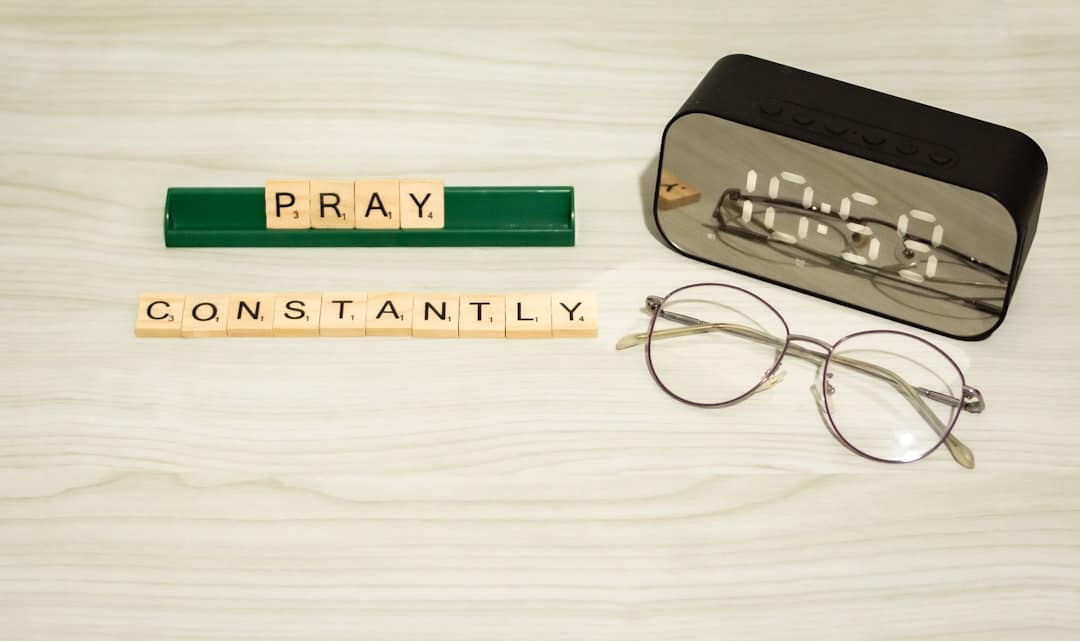Prayer is more than reciting words or going through motions; it is an intimate dialogue with the Divine. Yet many believers find their minds wandering to grocery lists, notifications, or yesterday’s worries the moment they close their eyes. If you have ever ended a prayer time wondering “Did I even connect with God?”, you are not alone. The good news is that concentrated prayer is a skill you can cultivate. Drawing on neuroscience, ancient contemplative traditions, and real-life testimonies, this article unpacks seven proven techniques for praying with deep, sustained focus.
Understanding Concentrated Prayer
Concentrated prayer—sometimes called attentive prayer or contemplative communion—is the deliberate directing of heart, mind, and body toward God for a sustained period. It differs from casual or multitasked prayer in that the quality of attention is valued above the quantity of words. Think of it as moving from talking at God to resting with God.
The Neuroscience of Focus
- Prefrontal Cortex Activation: Sustained focus lights up the brain’s executive center, reducing impulsive distractions.
- Default Mode Network Quietening: The DMN, responsible for daydreaming and self-referential thoughts, calms during deep prayer, creating a sense of timelessness.
- Neurochemical Shifts: Studies from the University of Pennsylvania show increased dopamine and serotonin release during focused spiritual practices, leading to peace and joy.
Biblical and Historical Precedents
From David’s “meditate on Your precepts” (Psalm 119:78) to Jesus retreating to lonely places to pray (Luke 5:16), Scripture models deliberate, undistracted communion. The Desert Fathers, medieval mystics, and Puritans all emphasized recollection, a gathered attention that seeks God alone.
Key Components of Concentrated Prayer
1. Intention
Before you even speak, set a clear intention. Ask yourself, “What do I want from this prayer?” It may be guidance, gratitude, confession, or simply to enjoy God’s presence. Intention acts like a compass for the mind.
2. Posture
Whether kneeling, sitting upright, or walking slowly, your body is a prayer tool. Research from Indiana University shows that an erect yet relaxed spine increases oxygenation and decreases intrusive thoughts.
3. Sacred Space
A consistent physical environment primes the brain for focus. Consider:
- Low lighting or a single candle to signal “quiet time”
- A specific chair or cushion used only for prayer
- Minimal digital distraction (phone in another room)
4. Breath Awareness
Simple attention on breathing quiets the nervous system. Try inhaling on a mental “Abba” and exhaling on “I belong to You.”
Benefits and Importance
| Benefit | Spiritual Impact | Psychological Impact |
|---|---|---|
| Deeper Intimacy | Senses God’s presence more vividly | Reduces feelings of isolation |
| Clarity of Calling | Discerns God’s voice amid noise | Less decision fatigue |
| Emotional Regulation | Increased fruit of the Spirit (Gal 5:22-23) | Lower cortisol, higher oxytocin |
| Holistic Health | Sees body as temple, leading to better stewardship | Improved sleep, lower blood pressure |
7 Proven Techniques for Concentrated Prayer
Technique 1: Scripture Breathing (Lectio Divina Lite)
Select a short verse (e.g., “Be still and know that I am God.”). Break it into phrases that match your natural inhale and exhale:
- Inhale – “Be still”
- Exhale – “and know”
- Inhale – “that I am”
- Exhale – “God.”
Repeat for 5-7 minutes. Each cycle anchors the mind on the living Word.
Technique 2: Prayer of Examen (Past 24-Hour Review)
Developed by Ignatius of Loyola, this method integrates gratitude and focus:
- Gratitude – Recall one moment you felt God’s closeness in the last day.
- Petition – Ask the Spirit to spotlight areas needing His light.
- Review – Walk through your day chronologically, pausing at any emotion that surfaces.
- Conversation – Dialogue with Jesus about what you noticed.
- Renewal – Receive forgiveness or encouragement and close with the Lord’s Prayer.
Technique 3: Sensory Grounding with a Prayer Object
Hold a smooth stone, a wooden cross, or even a cup of tea. Engage each sense:
- Sight – Notice color, texture, imperfections.
- Touch – Feel weight and temperature.
- Smell – Inhale any aroma as a reminder of God’s goodness.
- Hearing – Stillness itself becomes a sacred sound.
- Taste – If safe, sip slowly and let the flavor symbolize God’s nourishment.
Technique 4: Breath Prayer with Mantra
Combine a short phrase with rhythmic breathing. Classic examples:
- “Jesus, Son of God / Have mercy on me.”
- “Holy Spirit / Fill me afresh.”
Practice for 12 minutes. Research from the Mind & Life Institute shows such mantra-based prayer increases gamma-wave coherence, associated with heightened awareness.
Technique 5: Journal Dialogue
Write a letter to God on the left page and allow space on the right to “listen” by writing down any impressions, Scriptures, or pictures that arise. The physical act of writing slows the mind and crystallizes vague thoughts into clear communication.
Technique 6: Walking Prayer Loop
Map a short, quiet route (even indoors). Assign each segment a prayer focus:
| Segment | Focus |
|---|---|
| First 20 steps | Praise for creation |
| Next 20 | Intercession for family |
| Next 20 | Confession and release |
| Final 20 | Listening silence |
Technique 7: Digital Sabbath Prayer Slot
Choose one hour daily with all devices on airplane mode. Use the first 10 minutes for mind sweep journaling (dump every lingering task or worry), then transition into silent adoration. The tech-free boundary tells your brain, “This time is set apart.”
Practical Applications
Morning Launch Sequence
- Wake up without checking the phone (use an analog alarm).
- Drink a glass of water to rehydrate the brain.
- Sit upright, light a candle, and practice Scripture Breathing for 5 minutes.
- Move into Breath Prayer with Mantra for another 7 minutes.
- End with a one-sentence gratitude statement out loud.
Total time: 15 minutes. Users report increased patience and reduced reactivity throughout the day.
Midday Reset
Use a Prayer Object in your car or office drawer. A 3-minute sensory grounding at lunch can reset stress hormones, making afternoon meetings more Spirit-led.
Evening Examen
Before bed, dim lights and review the day using the Prayer of Examen. This promotes deeper sleep and prevents rumination.
Group Prayer Integration
Prayer circles can adopt the Walking Loop. One person quietly leads each segment while others walk in step, creating a corporate rhythm without verbal chaos.
Frequently Asked Questions
What if my mind keeps wandering?
Mind-wandering is normal. Each time you notice it, label the thought “thinking” and gently return to your anchor (breath, mantra, verse). Neurologists call this “cognitive redirection”, and it strengthens prefrontal circuits over time. Progress is measured by returning, not by never leaving.
How long should a focused prayer session last?
Start with 5-7 minutes. Once that feels natural, add 2-3 minutes every two weeks until you reach 20-25 minutes. Research from the Shalem Institute shows that 20 minutes is the sweet spot where most people enter deep theta-wave states associated with spiritual insight.
Can I use music or guided audio?
Instrumental music at 60-70 beats per minute can entrain your heart rate toward calm. Choose tracks without lyrics to avoid cognitive hijacking. Guided audio is excellent for beginners, but aim to wean off after 4-6 weeks to build internal focus.
Is it okay to pray lying down?
Lying down increases the risk of falling asleep. If physical posture is limited, elevate your head slightly and keep a light on. Alternatively, try “constructive rest”—knees bent, feet flat, which relaxes the spine without inducing sleep.
How do I involve children in concentrated prayer?
Shorten the sessions to 2-3 minutes. Use tactile elements like prayer beads or felt boards where they place symbols of thanks. Turn the Walking Loop into a backyard treasure hunt, assigning each found item a prayer topic.
What if I feel emotionally overwhelmed during prayer?
Strong emotions can surface when the mind stills. Keep tissues nearby and invite Jesus into the feeling: “Lord, You see this sadness; sit with me in it.” If trauma arises, consider contacting a trusted spiritual director or counselor.
Can concentrated prayer replace therapy?
Prayer complements but does not replace professional mental-health care. Many therapists integrate mindfulness-based prayer into treatment plans. View prayer as spiritual food and therapy as medical aid; both are gifts.
Conclusion
Concentrated prayer is not reserved for mystics or monks; it is the birthright of every believer who longs to “draw near to God” (James 4:8). By intentionally choosing posture, space, and proven techniques like Scripture Breathing or the Prayer of Examen, you
























Post Comment